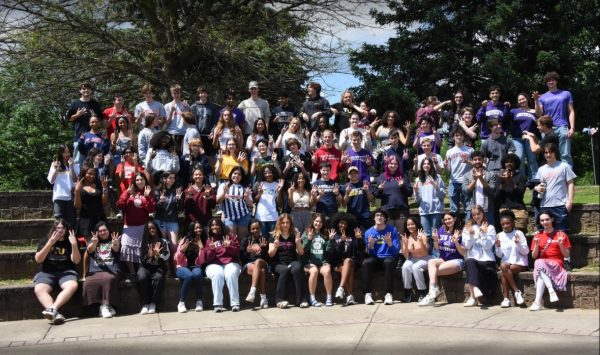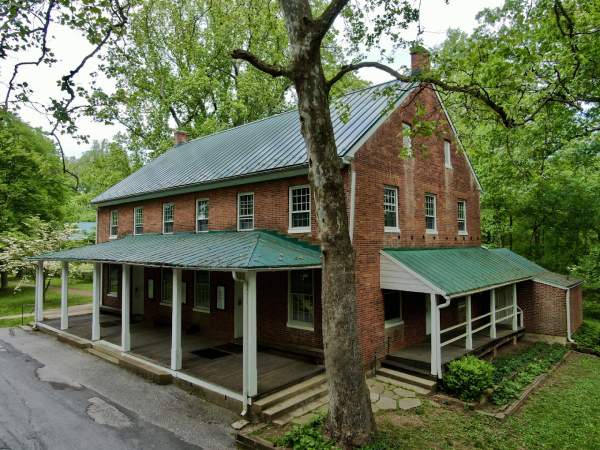How The Wildebeest came to SSFS
How does a southeast African herbivore come to represent a Quaker school in rural Maryland? The origin story of the Sandy Spring Friends’ enigmatic mascot is rich in school history. According to school archivist, Johanna Crowie, from the late 80s, the beginning workings of the Wildebeest were born.
According to Hannah Kerr, when the school was in its early stages, there were not as many buildings as there are now, and there was minimal funding for extracurriculars, sports, and sports equipment. We even lacked a mascot. However, what we did have was a stage. Reenactments of Gilbert and Sullivan productions, which were a popular collection of operettas and often the forerunners to modern musicals, were a popular forte for the students and faculty of the drama department. However, it was not until long-time teachers Bryan Seith and Bill Fitzgerald composed their operetta, A New Age, that Sandy Spring performed the original act that would first introduce the Wildebeest.
In this small performance, a group of rowdy young boys is shipwrecked on a matriarchal island. The boys, who refer to themselves as the “mighty wildebeest” in a musical number, encounter a group of holistic women who inhabit the island. The women represent this ‘new age’ that was just beginning to surface in the early 90s of peace, mindfulness, and acceptance. The two groups struggle to see eye to eye within their new co-inhabitants as they are significantly different in how they act and what they represent.
Additionally, there lives a butterfly catcher on the island, who works to catch the prize of all prizes: the strikingly beautiful butterfly who exists only on this island. Said butterfly happens to be a woman and the most recent addition to the aforementioned holistic group. She is different from the other women, as she does not feel such an aversion to the “mighty wildebeest” and is able to level with the boys. Acting as a middle ground between the two groups, a sense of unity begins to emerge.
Now at the final conflict of the operetta, the womanly butterfly is captured. In this state, she grows weak and pushes to the brink of death. The butterfly catcher is then forced to consider, should he set her free and lose everything he has worked toward to save what he loves? Finally, the catcher reconciles in a release of the butterfly, which then aligns the individual understandings of all the island’s inhabitants. In an overtly happy ending to this short comedy, the butterfly lives, the catcher learns to appreciate the beauty of the things he loves from afar, the women of the island end up returning to the mainland, and the boys stay to live off the island.
In this heart-lifting message, SSFS’ morals are engrained and have been perpetuated in our beliefs as a school today. The value put on seeing every side of the story and getting to know each perspective radiated through A New Age and has made our community what it is today. For this, what better mascot to choose than the Wildebeest? Though the mascot was not formally adopted until 1991 when the prop was brought to an SSFS basketball game, the nostalgic and reassuring story of how the Wildebeest came to SSFS keeps our school’s community and history intertwined.




